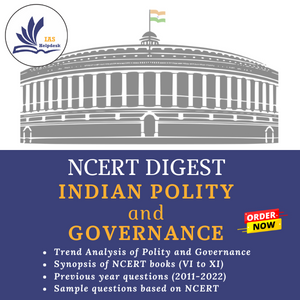PART 7 - NEWSPAPER TERMS SIMPLIFIED FOR IAS PRELIMS
Description
Newspaper Terms Simplified for IAS Prelims
Part 7
1. Mars Oxygen In-Situ Resource Utilization Experiment
• MOXIE produces oxygen from carbon dioxide in the Martian atmosphere by using solid oxide electrolysis.
• It is present on NASA’s Mars 2020 Rover Perseverance.
• Mars rover designed to explore the crater Jezero on Mars
2. Sounding rocket
• Sounding rockets are one or two stage solid propellant rockets used for probing the upper atmospheric regions and for space research.
• They also serve as easily affordable platforms to test or prove prototypes of new components or subsystems intended for use in launch vehicles and satellites.
3. Dark Sky Reserve
• It is a public or private land with a distinguished nocturnal environment and starry nights that has been developed responsibly to prevent light pollution.
• India’s 1st dark sky reserve will be set up at Hanle in Ladakh. It will come up within the Changthang Wildlife Sanctuary.
• Aridity, limited vegetation, high elevation and large areas with sparse populations, all make it the perfect setting for long-term astronomical observatories and dark sky places.
4. DART Mission
• It is a NASA space mission that aims to test a method of planetary defense against Near-Earth objects (NEO).
• It may one day save humanity from a potentially catastrophic collision by safely deflecting a deadly asteroid on its way to Earth
• It could also fuel space mining technologies and kickstart the space economy in the coming decades.
5. Rashid Rover
• It is the 1 st mission (unmanned spacecraft) to Moon from the UAE, which will be launched from Kennedy Space Centre in Florida in 2024.
• It is designed to study Moon's plasma and will attempt to explain why Moon dust is so sticky.
• It will also study the lunar surface, mobility on the Moon’s surface and how different surfaces interact with lunar particles.
6. NAVIC
• It is an independent stand-alone navigation satellite system developed by the Indian Space Research Organisation (ISRO).
• It consists of 7 satellites and covers the whole of India's landmass and up to 1,500 km from its boundaries.
• This system was earlier known as IRNSS (Indian Regional Navigation Satellite System).
• Application: o Presently, it is being used in public vehicle tracking in India, for providing emergency warning alerts to fishermen venturing into the deep sea and for tracking and providing information related to natural disasters.
• Presently, there are 4 navigation satellite systems operational in the world viz., GPS from the U.S., GLONASS from Russia, Galileo from European Union and BeiDou from China.
• In addition, there are 2 regional systems viz., NavIC from India and QZSS from Japan.

